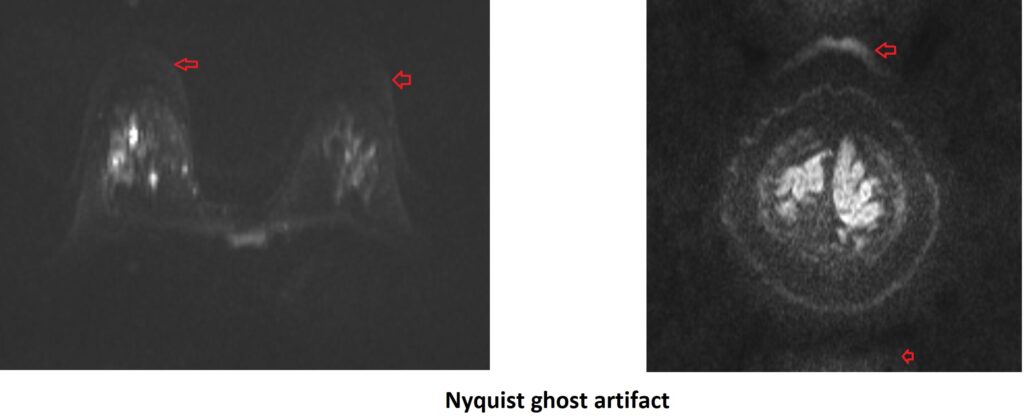MRI Nyquist Ghost Artifact
Nyquist ghost artifact is a common type of image artifact that can occur in MRI. It is caused by an error in the phase-encoding gradient during image acquisition, resulting in a “ghost” image that appears in the MRI image, displaced from the original image by half the field of view in the phase-encoding direction. This artifact is named after Harry Nyquist, a Swedish-American engineer and mathematician who developed the sampling theorem, which is relevant to the artifact.
The Nyquist theorem states that the highest spatial frequency that can be accurately sampled is half the sampling frequency. If the sampling frequency is not high enough, this can cause aliasing, where high spatial frequencies are incorrectly represented as low spatial frequencies. In MRI, this can result in the appearance of Nyquist ghost artifact.

Here are some strategies to minimize or avoid Nyquist Ghost Artifact
Reduce Echo Train Length (ETL): By reducing the ETL, which refers to the number of echoes acquired during a single excitation, you can minimize the occurrence of Nyquist ghost artifacts. Shorter ETL reduces the likelihood of phase errors accumulating and causing ghosting.
Correct shimming: Proper shimming, which involves adjusting the magnetic field homogeneity, can help reduce susceptibility-related phase errors that contribute to ghosting artifacts. Ensuring optimal shimming before image acquisition can minimize the occurrence of Nyquist ghost artifacts.
Reduce Phase Encoding (PE) resolution: By reducing the PE resolution or the number of phase-encoded lines, you can decrease the chances of aliasing and subsequent ghosting. However, reducing PE resolution should be done cautiously to avoid loss of important image details.
Use parallel imaging acceleration: Parallel imaging techniques, such as SENSE (SENSitivity Encoding) or GRAPPA (GeneRalized Autocalibrating Partial Parallel Acquisition), can help reduce Nyquist ghost artifacts. These techniques utilize multiple receiver coils and exploit the spatial information from each coil to accelerate the image acquisition and reduce aliasing artifacts.
Adjust slice orientation: In some cases, adjusting the slice orientation to be more or less oblique can help reduce the visibility of Nyquist ghost artifacts. Experimenting with different slice orientations can potentially minimize the impact of ghosting on the specific anatomy of interest.criterion is met.
References:
- Chen, N., & Wyrwicz, A. M. (2004). Removal of EPI Nyquist ghost artifacts with two-dimensional phase correction. Magn Reson Med, 51(6), 1247-1253. doi: 10.1002/mrm.20097.


